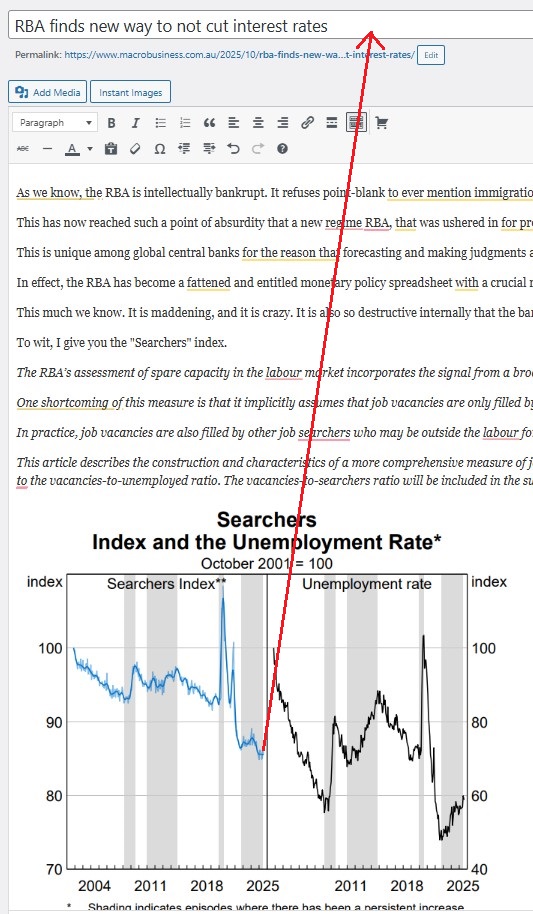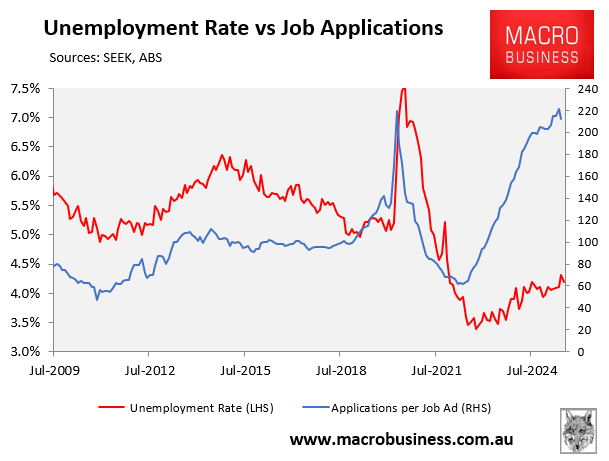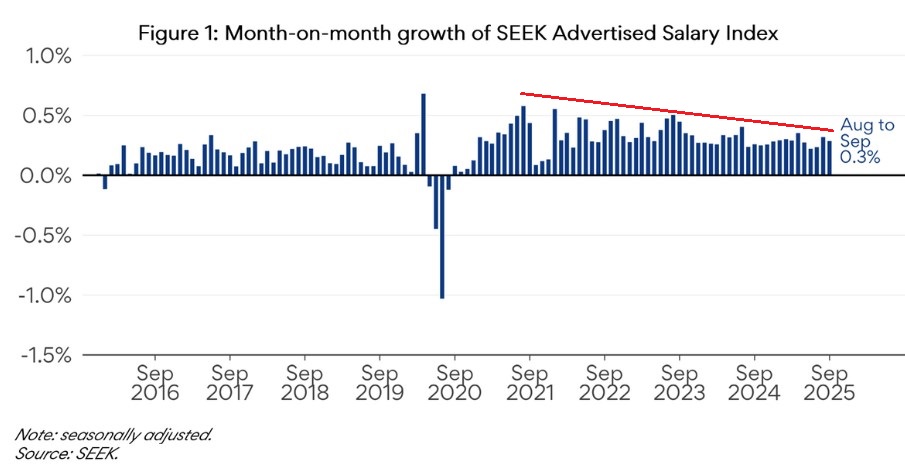As we know, the RBA is intellectually bankrupt. It refuses point-blank to ever mention immigration as a macro input, making it impossible to forecast wage growth and inflation.
This has now reached such a point of such absurdity that a new regime RBA, that was ushered in for precisely the failure described above, has become unable to forecast at all and now openly drives monetary policy in the rearview mirror.
This is unique among global central banks for the reason that monetary policy is intrinsically forward-looking and forecasting is its only job.
In effect, the RBA has become a fattened and useless monetary policy spreadsheet with a crucial missing column for immigration.
This much we know. It is maddening, and it is crazy. It is also so destructive internally that the bank now spends much of its time creating ever more abstruse excuses for why it is always too hawkish.
To wit, I give you the “Searchers” index.
The RBA’s assessment of spare capacity in the labour market incorporates the signal from a broad suite of indicators. The ratio of job vacancies to unemployed persons, which attempts to assess the imbalance between unmet labour demand and the labour supply available to meet this demand, is a standard measure of spare capacity in the labour market.
One shortcoming of this measure is that it implicitly assumes that job vacancies are only filled by the unemployed.
In practice, job vacancies are also filled by other job searchers who may be outside the labour force or searching on the job.
This article describes the construction and characteristics of a more comprehensive measure of job searchers (the Searchers Index) that considers both the unemployed and those who are not classified as being unemployed.
The Searchers Index allows us to construct an alternative measure of spare capacity (the vacancies-to-searchers ratio), which exhibits different properties to the vacancies-to-unemployed ratio.
The vacancies-to-searchers ratio will be included in the suite of indicators that we monitor to assess spare capacity in the labour market moving forward.

And guess what the “Searcher Index” is saying? Hike rates!
Now, to be fair, the Searcher Index may have some marginal value in an ordinary developed economy. But that is not Australia.
Australia is the world’s pioneering immigration-led economic model. The Searcher Index has no relevance at all unless it also captures those not currently unemployed in Australia but looking for a job here from overseas.
With India the immigration driver of the cycle, let us take that as an example.
If the Searcher Index were to include 50m unemployed Indians, plus those not in the Indian unemployed ranks but looking for a better job, then it would look more like this.

In fact, there isn’t a chart large enough to capture the extent of Australia’s real Seachers Index, which is why we see traditional measures such as applications per job also off the charts despite a supposedly “tight” labour market.

A part of the success of Australia’s immigration-led economic model is the systematic censorship of immigration discourse from the government because everybody with a brain knows that the losers of the model are workers who vote.
If the truth were ever discussed, that the model is nothing more than a wage suppression/housing inflation system, it would collapse in a political heartbeat.
Clearly, this has now reached some critical point of internecine navel-gazing such that the RBA and other bodies search for ever more creative ways of not mentioning the war.
Of course, this will produce the opposite outcome in due course, as the great wage suppression kills inflation stone dead, unemployment goes higher than forecast, and inflation lower, followed by interest rates.


